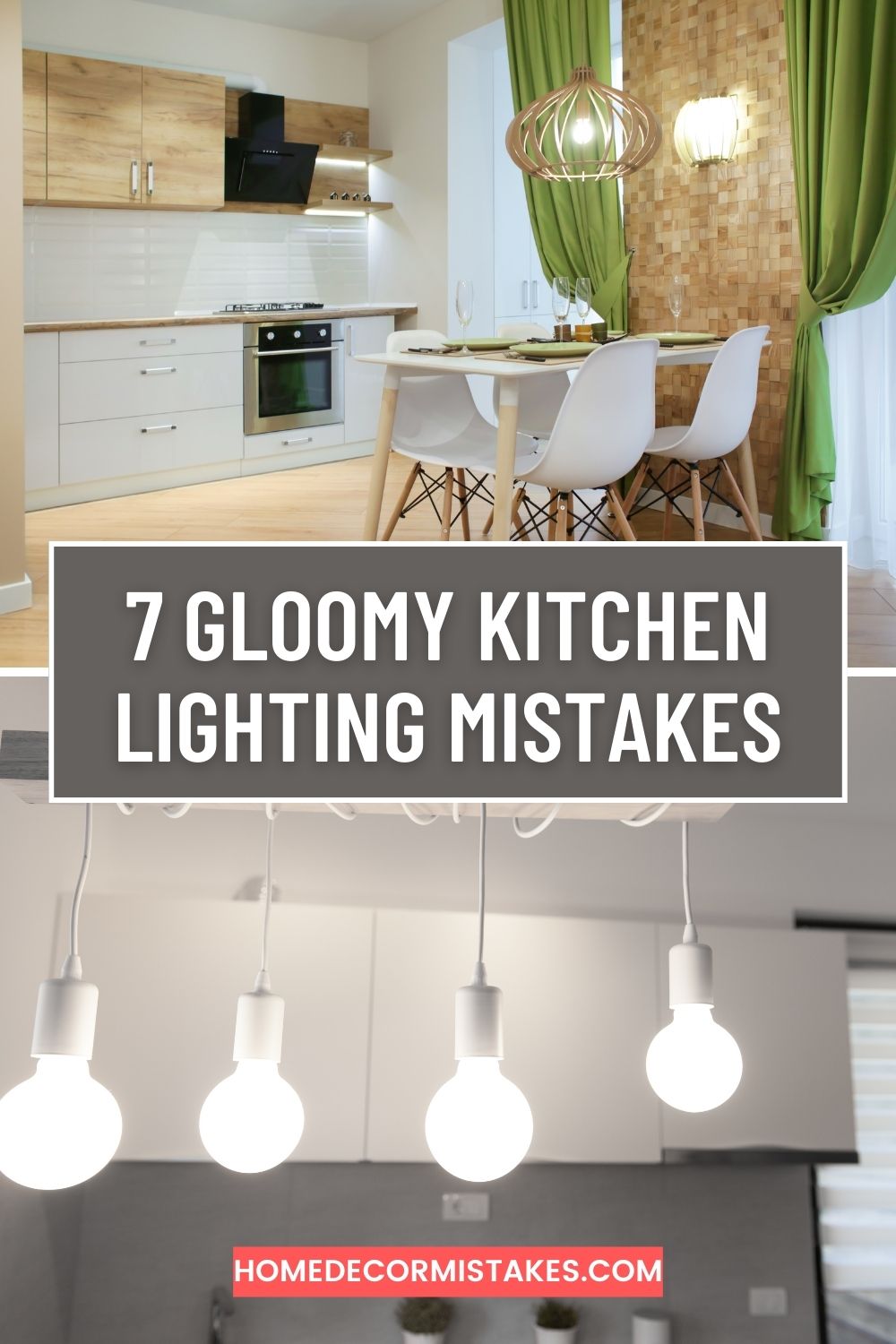7 Kitchen Lighting Mistakes That Make Your Kitchen Look Dark and Gloomy
Lighting plays a crucial role in the overall ambiance and functionality of your kitchen. A well-lit kitchen can make the space look larger, more inviting, and more efficient. However, many homeowners make common kitchen lighting mistakes that can result in a dark and gloomy atmosphere. In this blog post, we’ll identify seven key lighting errors and provide tips on how to avoid them.
1. Insufficient Overhead Lighting
One of the most common kitchen lighting mistakes is relying solely on a single overhead light source. While a central ceiling fixture can provide general illumination, it often leaves shadows and dark spots, especially in corners and under cabinets. To avoid this, incorporate multiple layers of lighting. Consider adding recessed lights, pendant lights, or a chandelier to ensure even distribution of light across the entire space.
Solution:
- Install recessed lighting in the ceiling at regular intervals.
- Use pendant lights over the kitchen island or dining area.
- Add a chandelier or statement fixture for style and additional lighting.
2. Lack of Task Lighting
Kitchens are workspaces where tasks like chopping, cooking, and reading recipes require adequate illumination. Neglecting task lighting can lead to poorly lit countertops and work areas, making it difficult to perform these tasks efficiently.
Solution:
- Install under-cabinet lighting to brighten up countertops.
- Use adjustable track lighting to focus light on specific areas.
- Consider adding LED strips under open shelves for extra visibility.
3. Ignoring Ambient Lighting
Ambient lighting sets the mood and overall feel of your kitchen. Relying solely on harsh, bright lights can make the kitchen feel sterile and unwelcoming. Ignoring the importance of ambient lighting can result in a space that feels cold and uninviting.
Solution:
- Incorporate dimmable lights to adjust the brightness according to the time of day and occasion.
- Use wall sconces or cove lighting to add warmth and depth.
- Opt for light fixtures with soft, diffused lighting to create a cozy atmosphere.
4. Poor Placement of Light Fixtures
Incorrect placement of light fixtures can cast unwanted shadows and create uneven lighting. Placing lights directly behind you while working at the counter, for example, can result in your own shadow obscuring your workspace.
Solution:
- Position recessed lights or track lighting in front of work areas to eliminate shadows.
- Ensure pendant lights are hung at the appropriate height—usually 30-36 inches above the countertop.
- Distribute lighting fixtures evenly across the kitchen to ensure balanced illumination.
5. Forgetting About Accent Lighting
Accent lighting highlights architectural features, decorative elements, and artwork in your kitchen. Overlooking accent lighting can make the space feel flat and one-dimensional, lacking visual interest and character.
Solution:
- Use LED strips to illuminate open shelves or glass-front cabinets.
- Install spotlights or directional lights to showcase artwork or unique architectural details.
- Add toe-kick lighting under lower cabinets for a subtle, elegant glow.
6. Choosing the Wrong Bulb Color Temperature
The color temperature of your bulbs significantly impacts the kitchen’s ambiance. Bulbs that are too cool (blue-toned) can make the space feel clinical, while those that are too warm (yellow-toned) can create a dingy appearance.
Solution:
- Opt for bulbs with a color temperature between 2700K and 3000K for a warm, inviting glow.
- Use daylight bulbs (5000K-6500K) for task lighting to ensure clarity and brightness.
- Mix different color temperatures strategically to balance functionality and ambiance.
7. Overlooking Natural Light
Natural light is an invaluable resource that can make your kitchen feel bright and airy. Failing to maximize natural light can leave your kitchen feeling dark and enclosed.
Solution:
- Keep windows clean and unobstructed to allow maximum light penetration.
- Use light, sheer curtains to diffuse sunlight without blocking it entirely.
- Consider installing skylights or solar tubes if your kitchen lacks sufficient windows.
Conclusion
By addressing these common kitchen lighting mistakes, you can transform your kitchen into a bright, welcoming, and functional space. Remember to combine different types of lighting, consider the placement of fixtures, and make the most of natural light. With a thoughtful lighting plan, your kitchen will be a place where you love to cook, entertain, and spend time with family and friends.

